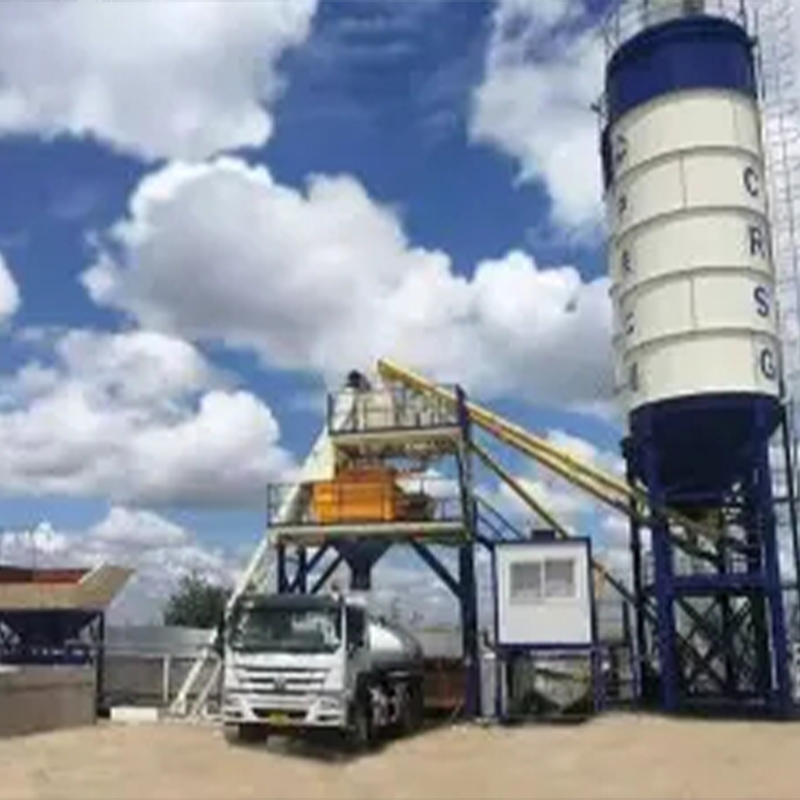It’s surprising how often the role of a stabilized base plant is overlooked in sustainable construction discussions. This integral part of infrastructure development offers solutions to some pressing environmental issues, yet many still remain unaware. What is the real impact of these plants on sustainability, and how do they contribute to more responsible construction practices?

Understanding Stabilized Base Plants
In essence, a stabilized base plant produces a blend of materials that serve as the foundation for roads and other structures. These plants are critical in creating strong, durable surfaces that endure harsh conditions. The stability derived from these bases simplifies maintenance and prolongs the lifespan of infrastructure, reducing the need for frequent repairs and replacements.
In practice, what often goes unnoticed is the efficiency of these plants in resource usage. Having worked alongside Zibo jixiang Machinery Co.,Ltd., a pioneer in concrete mixing equipment (website: zbjxmachinery.com), I’ve seen firsthand how modern technology is leveraged to create material blends that minimize wastage. This approach aligns with sustainability goals by conserving resources and reducing environmental strain.
Moreover, these plants often incorporate recycled materials as part of their blend, directly addressing waste management challenges. This use of recycled content not only lessens landfill pressures but also cuts down on the exploitation of new resources. As we move towards more sustainable construction practices, this aspect becomes increasingly relevant.
Energy Efficiency and Reduced Carbon Footprint
Efficiency isn’t just about materials; it also extends to the energy consumption of the stabilized base plant. Modern plants strive to optimize every step of the process, from raw material acquisition to final product delivery. Energy-efficient practices contribute to a reduced carbon footprint, which is essential as industries aim to meet international environmental standards.
One common challenge is finding the balance between optimal production rates and minimal energy use. At Zibo jixiang Machinery Co.,Ltd., we’ve experimented with various configurations to identify setups that reduce energy demands while maintaining output quality. These tweaks, though sometimes minor, can make significant environmental impacts over time.
It’s essential to acknowledge that the journey toward sustainability isn’t without its setbacks. Initial investments in energy-efficient technologies can be daunting, and occasionally, expected improvements don’t materialize immediately. However, with continued innovation and commitment, these challenges can be overcome.
Water Conservation Efforts
Water use in concrete production is another sustainability focus area. Interestingly, stabilized base plants have been incorporating water recycling mechanisms to mitigate excessive resource consumption. At our sites, rainwater harvesting and recycling systems play a critical role in reducing the reliance on freshwater sources.
However, these systems are not without their complexities. Handling recycled water requires careful monitoring to ensure it meets quality standards and does not introduce impurities into the final product. These considerations demand rigorous quality control and sometimes entail additional treatment processes.
Through our partnerships and ongoing projects, it’s clear that investing in water conservation methods is vital. Not only does this practice preserve a limited resource, but it also aligns with broader sustainability objectives that transcend the construction industry.
The Role of Innovation in Sustainable Practices
The significance of innovation cannot be overstated in the sustainability journey of stabilized base plants. From adapting machinery to developing new materials, constant advancement drives the industry forward. For instance, adapting machinery designs to use alternative energies or exploring new additive materials can yield substantial environmental benefits.
Zibo jixiang Machinery Co.,Ltd. is continuously exploring these frontiers. Their commitment to research and development underscores the transformative power of innovation. Despite the inherent risks, such endeavors promise substantial rewards in terms of sustainability and operational cost savings.
To implement these innovations effectively, collaboration across the sector is crucial. Sharing insights and technologies accelerates progress and fosters collective growth towards sustainability goals.

Integration into Wider Infrastructure Planning
The integration of stabilized base plants into larger infrastructure projects underscores their role in sustainable development. By ensuring that these plants operate at optimal efficiency, the entire supply chain benefits. Coordination with other phases of construction ensures seamless transitions and minimizes project overruns or environmental harm.
However, achieving this integration requires meticulous planning and communication. Ensuring all stakeholders are aligned on sustainability objectives remains a challenging yet essential task. It’s often the overlooked holes in communication that lead to inefficiencies and, ultimately, increased environmental impact.
Ultimately, understanding the stabilized base plant’s contribution to broader sustainability efforts can magnify its positive impact. By emphasizing their role not just in construction but as a crucial component in preserving our ecosystem, we take a step closer to a more sustainable future.
Post time: 2025-10-10
